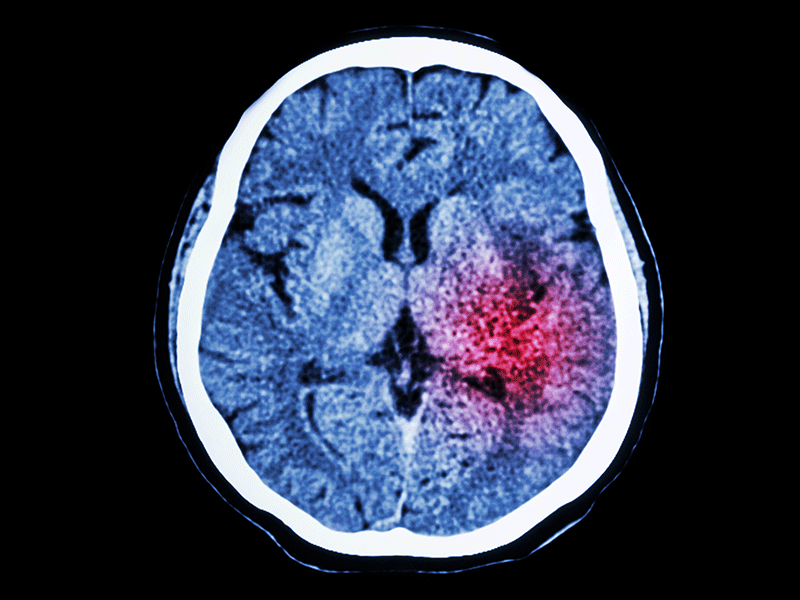Stronger After Stroke

“We are what we repeatedly do. We are what we repeatedly think.”
This quote was on the projection screen as I and two other therapists from Franklin Rehabilitation sat down to listen as Peter Levine – a leading therapist and researcher in the field of stroke rehab – began his presentation earlier this year. We learned valuable information that day; information we have since put into practice on a daily basis. His insight has helped us enable three stroke survivors become stronger than they have ever been since suffering a stroke. The overarching concept of the workshop was Neuroplasticity: The brain’s ability to reorganize itself by forming new neural connections throughout life.
Neuroplasticity allows the neurons in the brain to compensate for injury and disease and to adjust their activities in response to new situations or to changes in their environment. Brain reorganization takes place by mechanisms such as “axonal sprouting” in which undamaged axons grow new nerve endings to reconnect neurons whose links were injured or severed. Undamaged axons can also sprout nerve endings and connect with other undamaged nerve cells, forming new neural pathways to accomplish a needed function.
As you may already know, a stroke damages the brain via an infarct – an obstruction of the blood supply to a region of the brain – typically by a thrombus or embolus, causing local death of the tissue. This brain tissue will never recover. However, there is an area of brain tissue surrounding the infarct called the Penumbra where nerve cells are alive but not working. These cells are still alive, but need to be rebooted, much like a computer in power save mode. Immediately after a stroke, the penumbra is primed and ready to learn. This is where therapy comes into play. Skilled therapists such as those at Franklin Rehabilitation can reactivate the penumbra to get the highest level of recovery.
Some therapists used to think people with stroke plateaued after the sub-acute phase (about three months following a stroke). But we now know that due to neuroplasticity of the brain, we can continue to make changes years after the original stroke! One of the interesting discoveries recently made is that healing can continue for years after stroke. Years after stroke survivors have been discharged from therapy, recovery can endure with the aid of a broad range of neuroplastic (brain rewiring) interventions. There is no time that is quite as fertile as the period of natural recovery in the first three months after stroke, but recovery can continue even after that phase. Stroke survivors should be encouraged and should see therapy not as the beginning of the end, but as the end of the beginning.
If you or someone you know have suffered a stroke and wish to become stronger, please contact one of the Physical Therapists at Franklin Rehabilitation for a consultation. Together, we can help you become “Stronger After Stroke.”
